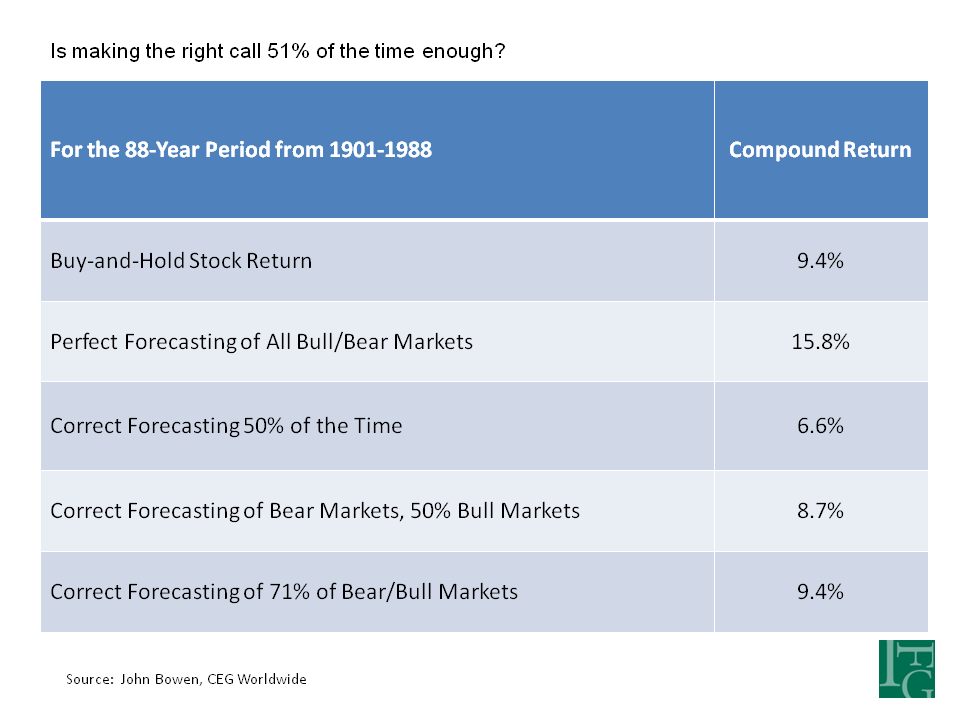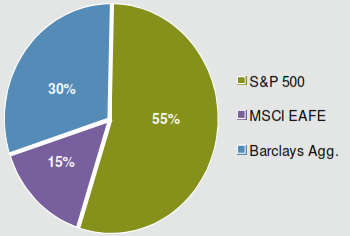Few understand the power of the investment allocation model, even in – especially in – times of crisis; but the power can be great when tied to a long-range financial plan.
I can almost guarantee that not many people fully realize the power of an investment model as a means to fulfill a long-range financial plan, even in – or especially in – times of crisis.
The chances of a V-shaped recovery appear to be slim; not just because of the chances of a new spike in the pandemic due to possible premature reopening of the economy, it’s more about how market recoveries generally occur; yet, the power of the investment model remains unknown to many.
Many people intuitively believe that a 20% loss can be recaptured with a 20% gain; but, of course it’s not true. If you start out with $100, a 20% loss takes you down to $80. But, to get back to $100, you need to see your $80 grow by 25% ($20 ÷ $80). So, knowing that it takes a 25% gain to buy back a 20% loss, it’s easy to see why recoveries generally take longer than the original decline.
When we suffer declines in the market, it can be tempting for some people to sell on the way down in an attempt to cut their losses. The problem, of course is that calling the ‘bottom’ is difficult, because recoveries seldom occur in a straight line. Next thing they know, the recovery happened and they missed the rebound forcing them to buy back in at a new high. As you can see from this chart, a simple buy-and-hold philosophy would have been much easier without forcing them to become a market genius. After all, if Warren Buffett can’t time markets – and he says he can’t – than, why should we try?
That’s where the power of the investment allocation model comes in.
Those who’ve been smart enough to build their financial future with a blueprint tend to have a framework for fulfilling their long-range strategic plan. On the investment side of their planning, the foundation is an customized asset allocation. What few realize is that that allocation has an automatic buy low/sell high mechanism that comes built-in!
Let’s look at a simplified example:
Since we talking about stocks more than bonds, let’s use an example of a simple growth-oriented allocation that’s comprised of 70% stocks and 30% bonds, with the majority of the stocks in the domestic U.S. market (represented here using the S&P index) and a lesser amount in foreign stocks (represented here using a Europe, Asia, and Far East index).
Let’s assume our hypothetical investor has $500,000 invested. To make it simple, basic stock-bond allocation would look like this:
Stocks: $350,000 = 70%
Bonds: $150,000 = 30%
Total: $500,000 = 100%
Now, let’s suppose stocks drop by 20% (we’ll pretend bonds stay the same). Our new allocation would look something like this:
Stocks: $280,000 = 65%
Bonds: $150,000 = 35%
Total: $430,000 = 100%
Stocks are now underweighted by 5% and bonds are now overweighted 5%. The great thing about models is that they can, and usually are, rebalanced on some type of schedule or according to some built-in protocol. To get back to our original allocation, money will have to be reallocated from bonds into stocks – the rebalancing ensures that we’re now buying low.
In order to get stocks back to their 70% weighting, we’ll need to bring the stock total to $301,000 ($430,000 x 70%). That will require moving $21,000 from bonds ($301,000 – $280,000). So, our rebalanced allocation is now:
Stocks: $301,000 = 70%
Bonds: $129,000 = 30%
Total: $430,000 = 100%
Now, over time, the stock market finally recovers the 25% needed to get back to where it was. That 25% gain in stocks adds $75,250 to stock value:
Stocks: $376,250 = 74%
Bonds: $129,000 = 26%
Total: $505,250 = 100%
Notice, we didn’t just get back to where we were before, we actually made money! We ‘beat the market’? How did that happen? The market returned to where it was but we ended-up ahead!
Rebalancing the investment model allowed us to buy low and sell high without being a market genius!
Now, of course, this is a over-simplified hypothetical (you can’t buy an index and I’ve ignored things like the time-frame involved, taxes, inflation, and a lot of other stuff), but, the concept is no less valid.
Oh, yes, rebalancing again now, getting us back to our original allocation, now means that we’re `selling high’ as the 4% overweighted stock money is now repositioned back to bonds until next time.
Not bad, eh?
Jim
————————————
Interested in becoming an IFG client? Why play phone tag? Schedule your 15-minute introductory phone call!

Jim Lorenzen is a CERTIFIED FINANCIAL PLANNER® professional and An Accredited Investment Fiduciary® in his 21st year of private practice as Founding Principal of The Independent Financial Group, a fee-only registered investment advisor with clients located in New York, Florida, and California. He is also licensed for insurance as an independent agent under California license 0C00742. IFG helps specializes in crafting wealth design strategies around life goals by using a proven planning process coupled with a cost-conscious objective and non-conflicted risk management philosophy.
Opinions expressed are those of the author. The Independent Financial Group does not provide legal or tax advice and nothing contained herein should be construed as securities or investment advice, nor an opinion regarding the appropriateness of any investment to the individual reader. The general information provided should not be acted upon without obtaining specific legal, tax, and investment advice from an appropriate licensed professional.







